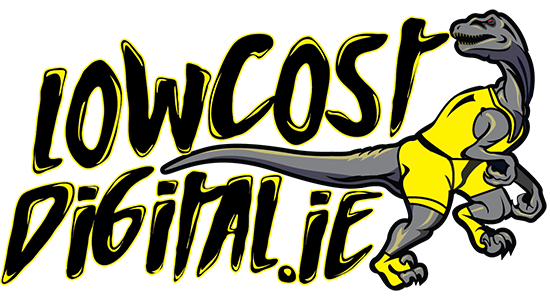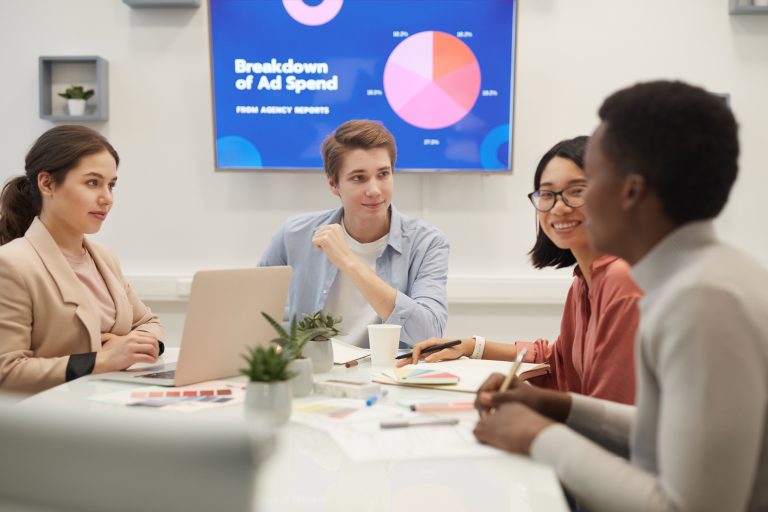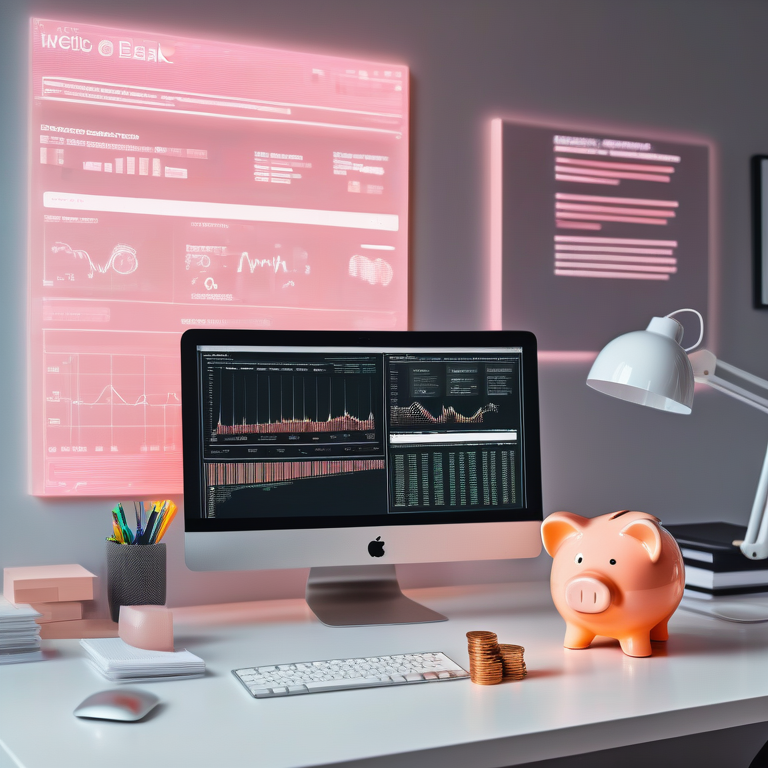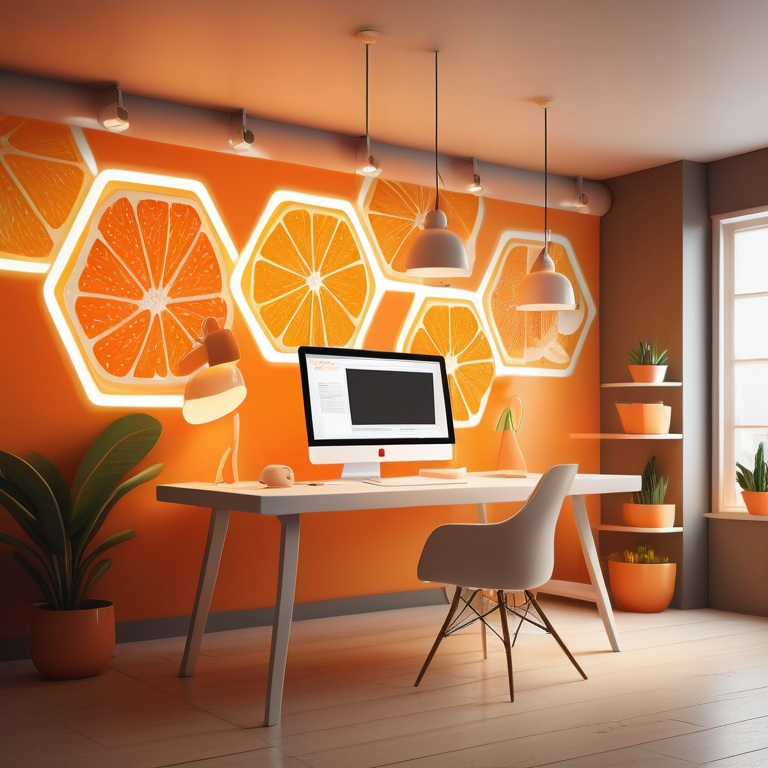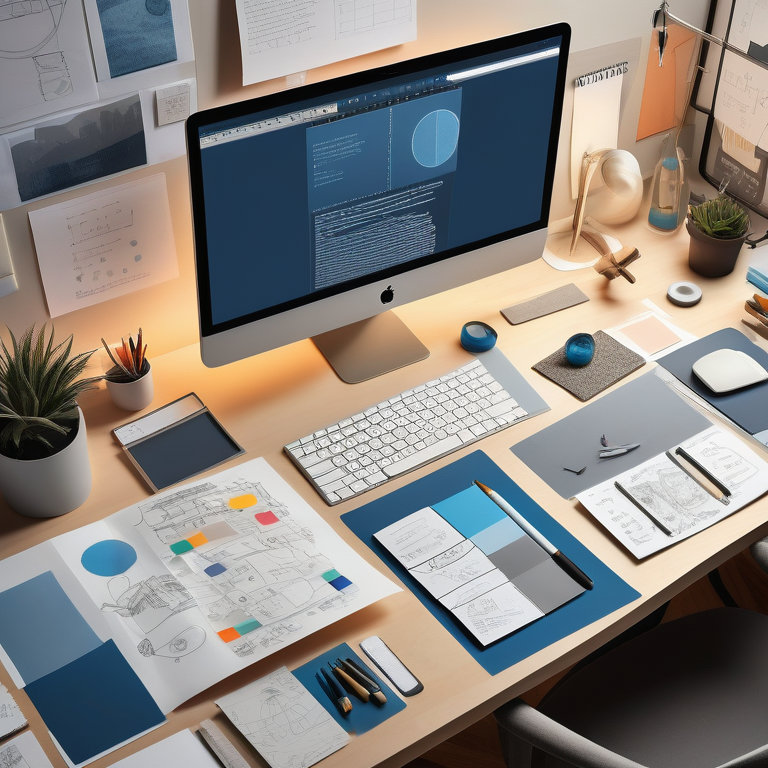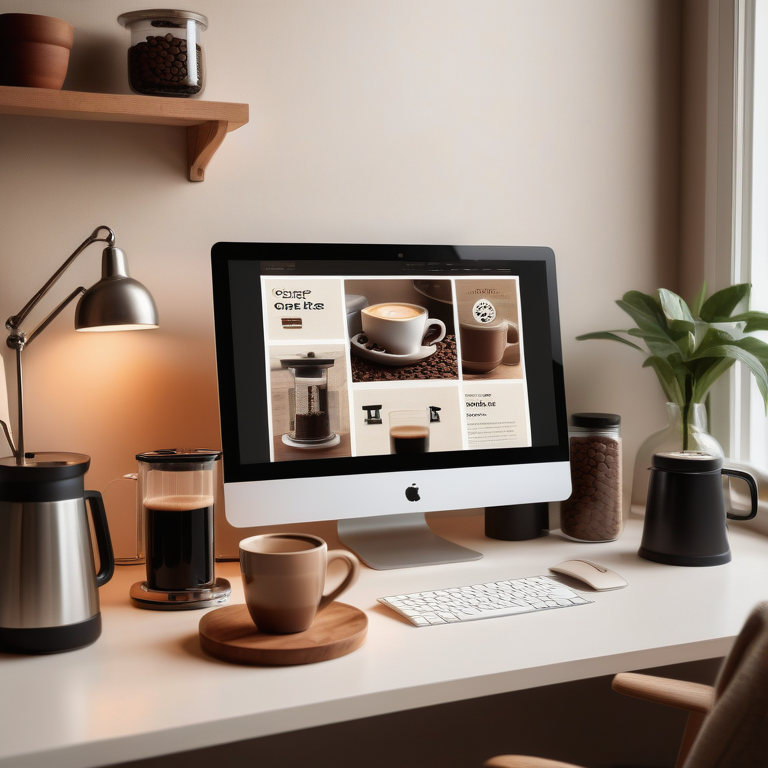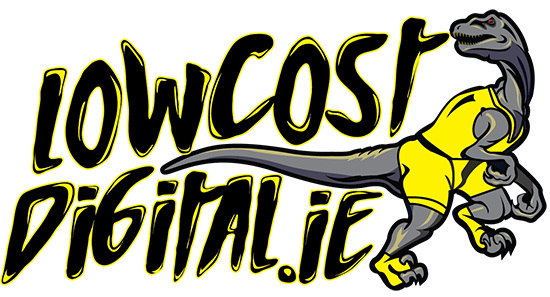Key Highlights
- Web design methodologies are essential for creating successful websites that prioritize user experience and incorporate responsive design.
- Responsive design ensures that websites are compatible with mobile devices, improving user experience and accessibility.
- Minimalist design focuses on simplicity and clean aesthetics, enhancing usability and visual design.
- Material design incorporates depth and realism through the use of visual elements, enhancing the overall user experience.
- Flat design emphasizes usability by using simple and minimalistic design elements, making navigation intuitive and user-friendly.
- Typography-first design focuses on creating readable and attractive text, enhancing the overall content and user experience.
- Grid-based layouts structure content for flexibility, allowing for easy content management and design element placement.
- Fitt’s Law emphasizes designing for ease of use and interaction by considering the size and placement of interactive elements.
- Color theory in web design is crucial for effective communication and creating a visually appealing user experience.
- Mobile-first design prioritizes the design process for smaller screens, ensuring that websites are optimized for mobile devices.
- Progressive enhancement involves building websites that cater to every user, regardless of their device or browsing capabilities.
Introduction
Web design is not just about creating visually appealing websites. It is about creating websites that prioritize user experience, accessibility, and functionality. To achieve this, web designers employ various methodologies throughout the design process, including incorporating social media buttons and slick visuals. These methodologies encompass different aspects of web design, such as responsive design, minimalist design, material design, flat design, typography-first design, grid-based layouts, Fitt’s Law, color theory, mobile-first design, and progressive enhancement. However, great design is not just about technical aspects, but also about having a website creation process that aligns with an overarching strategy, including incorporating social media to reach a wider audience.
Each methodology brings its own unique benefits to the table, focusing on different aspects of the user experience and design elements. By incorporating these methodologies into their design process, web designers can create websites that not only look great but also deliver a seamless user experience.
In this blog, we will explore these 10 essential web design methodologies in detail, understanding their importance and how they contribute to the overall web design process. We will also discuss the key takeaways from each methodology, allowing you to apply these principles to your own web design projects. Whether you are a web designer or a business owner looking to create a successful website, understanding the simple steps of the website design process is crucial. These methodologies will serve as a valuable guide to enhance your website design process. www.lowcostdigital.ie
Exploring the 10 Essential Web Design Methodologies
Web design methodologies are a set of principles and practices that guide the design process and ensure the creation of effective and user-friendly websites. These methodologies encompass various aspects of web design, including responsive design, minimalist design, material design, flat design, typography-first design, grid-based layouts, Fitt’s Law, color theory, mobile-first design, and progressive enhancement.
By incorporating these methodologies into the web design process, designers can create websites that prioritize user experience, functionality, and visual appeal. Each methodology focuses on different aspects of web design, allowing designers to tailor their approach based on the project requirements and user needs. When building a new website or new web pages, using a web methodology will help deliver the functionality you are after. Let’s dive into each methodology and explore their significance in the web design process, specifically when building a new website.
1. Responsive Design: Ensuring Mobile Compatibility
Responsive design is a web design approach that ensures websites adapt and respond to different devices and screen sizes, providing a consistent and optimal user experience. With the increasing use of mobile devices to browse the internet, it is crucial for websites to be mobile-friendly and compatible across various devices and browsers.
By implementing responsive design, web designers can create websites that automatically adjust their layout, content, and navigation based on the screen size and capabilities of the device being used. This ensures that users can easily navigate and interact with the website, regardless of whether they are using a desktop computer, smartphone, or tablet.
Responsive design not only improves the user experience but also contributes to better search engine rankings. Search engines prioritize mobile-friendly websites in their search results, making responsive design a crucial aspect of web design methodologies. By incorporating responsive design into the web design process, designers can create websites that are accessible and user-friendly across different devices, enhancing the overall user experience. Additionally, it is important to include relevant keywords in the meta description of a website to improve its SEO and increase its visibility in search engine results. This meta description is a brief summary of the webpage’s content and purpose, and including keywords in it can help attract more traffic to the website. www.lowcostdigital.ie
2. Minimalist Design: Keeping It Simple and Clean
Minimalist design is a web design approach that focuses on simplicity and clean aesthetics. It emphasizes the use of minimal elements, white space, and a limited color palette to create a visually appealing and clutter-free website.
One of the key benefits of minimalist design is improved usability. By removing unnecessary elements and distractions, minimalist design allows users to focus on the essential content and tasks. This enhances the overall user experience and makes navigation more intuitive and straightforward.
In addition to usability, minimalist design also contributes to the visual appeal of a website. By using whitespace effectively and choosing a limited color palette, designers can create a visually striking website that stands out from the crowd. Minimalist design is especially popular in modern web design, where simplicity and elegance are highly valued.
When implementing minimalist design, it is essential to strike the right balance between simplicity and functionality. While minimalism promotes clean aesthetics, it should not compromise the website’s usability and functionality. By incorporating minimalist design principles into the web design process, designers can create visually appealing and user-friendly websites that deliver a seamless user experience.
3. Material Design: Incorporating Depth and Realism
Material design is a design language developed by Google that focuses on creating a visual and interactive experience that mimics real-world materials and objects. It incorporates principles of graphic design, motion, and user interaction to create a cohesive and intuitive user interface.
One of the primary goals of material design is to provide users with a sense of familiarity and realism. By using visual elements such as shadows, depth, and transitions, material design creates a responsive and interactive interface that feels natural to users. This enhances the overall user experience and makes the website more engaging and enjoyable to navigate.
Material design also emphasizes the use of consistent design elements and typography, creating a cohesive and visually appealing interface. By incorporating material design principles into the web design process, designers can create websites that are not only aesthetically pleasing but also intuitive and user-friendly. www.lowcostdigital.ie
4. Flat Design: Emphasizing Usability with Simple Elements
Flat design is a web design approach that focuses on simplicity and minimalistic aesthetics. It emphasizes the use of clean lines, bold colors, and simple shapes to create a visually appealing and user-friendly interface.
One of the key benefits of flat design is improved usability. By removing unnecessary design elements and visual clutter, flat design allows users to focus on the essential content and tasks. This enhances the overall user experience and makes navigation more intuitive and straightforward.
Flat design also promotes faster loading times and better performance since it uses fewer visual elements and effects. This makes flat design an excellent choice for websites that prioritize speed and efficiency.
When implementing flat design, it is essential to strike the right balance between simplicity and visual interest. While flat design promotes minimalistic aesthetics, it should not compromise the website’s visual appeal and branding. By incorporating flat design principles into the web design process, designers can create visually appealing and user-friendly websites that deliver a seamless user experience.
5. Typography-First: Crafting Readable and Attractive Text
Typography-first design is a web design approach that prioritizes the use of typography to create readable and visually appealing text. It focuses on selecting the right fonts, font sizes, spacing, and line heights to enhance the overall readability and aesthetics of the website.
One of the key benefits of typography-first design is improved readability. By choosing fonts that are easy to read and adjusting the spacing and line heights, designers can ensure that users can easily consume the written content on the website. This enhances the overall user experience and makes the website more engaging and accessible.
Typography-first design also contributes to the visual appeal of the website. By selecting fonts that align with the brand identity and using typography as a design element, designers can create a visually striking website that stands out from the crowd.
When implementing typography-first design, it is essential to consider factors such as accessibility and cross-browser compatibility. By incorporating typography-first design principles into the web design process, designers can create websites that prioritize readability and aesthetics, delivering a seamless user experience. www.lowcostdigital.ie
6. Grid-Based Layouts: Structuring Content for Flexibility
Grid-based layouts are a web design approach that involves structuring content on a website using a grid system. This allows designers to create a flexible layout that can easily adapt to different screen sizes and devices.
One of the key benefits of grid-based layouts is improved content management. By dividing the website into a grid structure, designers can easily organize and manage the content, ensuring that it is visually appealing and easy to navigate. This enhances the overall user experience and makes the website more user-friendly.
Grid-based layouts also contribute to the overall design aesthetic of the website. By using a grid system, designers can create a consistent and visually appealing layout that aligns with the brand identity and design elements.
When implementing grid-based layouts, it is essential to consider factors such as responsiveness and adaptability. By incorporating grid-based layout principles into the web design process, designers can create websites that prioritize content management and flexibility, delivering a seamless user experience.
7. Fitt’s Law: Designing for Ease of Use and Interaction
Fitt’s Law is a web design principle that focuses on designing for ease of use and interaction. It states that the time required for a user to move to a target area is determined by the distance to the target and the size of the target.
By applying Fitt’s Law to web design, designers can create interfaces that are intuitive and user-friendly. This involves making interactive elements, such as buttons and links, larger and placing them within easy reach of the user. This enhances the overall usability and accessibility of the website, making it easier for users to navigate and interact with the content. Additionally, designers should prompt visitors with a call to action (CTA) or two, asking them to subscribe to a blog or newsletter, buy something, follow a social media account, or enter their email addresses as part of the lead-generation strategy. Including a well-designed CTA is crucial for converting visitors into customers or subscribers.
Fitt’s Law also influences design choices, such as the placement and size of interactive elements. By considering Fitt’s Law during the web design process, designers can create websites that prioritize ease of use and interaction, delivering a seamless user experience.
8. Color Theory in Web Design: Communicating with Colors
Color theory in web design focuses on the use of colors to communicate messages, evoke emotions, and enhance the overall user experience. It involves understanding the psychological and emotional impact of colors and using them strategically to create visually appealing and engaging websites.
Color theory plays a crucial role in visual design, as colors can convey meaning and evoke specific responses from users. By using colors effectively, designers can create websites that align with the brand identity, communicate messages, and create an engaging user experience.
When implementing color theory in web design, it is essential to consider factors such as color psychology, cultural associations, and accessibility. By incorporating color theory into the web design process, designers can create visually appealing and user-friendly websites that deliver a seamless user experience. www.lowcostdigital.ie
9. Mobile-First Design: Prioritizing Smaller Screens
Mobile-first design is a web design approach that prioritizes the design process for smaller screens, such as smartphones and tablets. It involves designing and developing websites with the mobile user experience as the starting point and then adapting the design for larger screens.
With the increasing use of mobile devices to browse the internet, it is crucial for websites to be optimized for smaller screens. Mobile-first design ensures that websites are responsive, fast-loading, and user-friendly on mobile devices.
By implementing mobile-first design, web designers can create websites that prioritize the mobile user experience, improving engagement and accessibility. This approach also aligns with Google’s mobile-first indexing, which prioritizes mobile-friendly websites in search rankings.
When implementing mobile-first design, it is essential to consider factors such as user behavior, device capabilities, and content strategy. By incorporating mobile-first design principles into the web design process, designers can create websites that prioritize the mobile user experience, delivering a seamless user experience across all devices.
10. Progressive Enhancement: Building for Every User
Progressive enhancement is a web development approach that involves building websites that cater to every user, regardless of their device or browsing capabilities. It ensures that the website’s core functionality and content are accessible to all users, regardless of their device or browser limitations.
By implementing progressive enhancement, web developers can create websites that prioritize usability and accessibility. This approach starts with a solid foundation of HTML and CSS, ensuring that the website is accessible to all users. Additional layers of functionality and design elements are then added progressively, enhancing the user experience for users with modern browsers and devices. Launching the website is just the beginning, as a key thing to remember is that the site is never truly finished. Ongoing user testing, analytics monitoring, and messaging refinement are crucial for continued success and improvement.
Progressive enhancement not only improves usability and accessibility but also future-proofs the website, allowing for easy updates and enhancements. By incorporating progressive enhancement into the web development process, developers can create websites that deliver a seamless user experience for all users, regardless of their device or browsing capabilities.
Key Takeaways on Web Design Methodologies
Incorporating web design methodologies into the design process is crucial for creating successful websites that prioritize user experience, functionality, and visual appeal. Each methodology, including responsive design, minimalist design, material design, flat design, typography-first design, grid-based layouts, Fitt’s Law, color theory, mobile-first design, progressive enhancement, and templates, brings its own unique benefits to the table. Templates are especially important as they allow for consistent design elements and functionality across multiple pages of a website.
By understanding and applying these methodologies, web designers can create websites that deliver a seamless user experience, engage visitors, and communicate effectively. By prioritizing user experience, considering design elements, and applying the right methodologies, web designers can create websites that stand out and achieve their goals. www.lowcostdigital.ie
Understanding the Importance of Responsive Design
Responsive design is crucial in today’s mobile-centric world. With the increasing use of mobile devices to browse the internet, websites must be compatible with various screen sizes and devices.
Having a responsive design ensures that websites automatically adapt and respond to different devices, improving usability and user experience. Responsive design also plays a significant role in search engine optimization, as search engines prioritize mobile-friendly websites in their search results.
By implementing responsive design, web designers can create websites that are accessible and user-friendly across different devices, enhancing the overall user experience and improving search engine rankings.
The Role of Minimalism in Modern Web Design
Minimalist design plays a crucial role in modern web design. By focusing on simplicity and clean aesthetics, minimalist design enhances the overall user experience and improves website design.
Minimalist design prioritizes usability by removing unnecessary elements and distractions, allowing users to focus on essential content and tasks. This makes navigation more intuitive and straightforward, improving the overall user experience.
Visually, minimalist design creates a visually appealing and elegant website that stands out from the crowd. By using whitespace effectively and choosing a limited color palette, minimalist design creates a visually striking website that aligns with the brand identity and design elements.
By incorporating minimalist design principles into the web design process, designers can create visually appealing and user-friendly websites that deliver a seamless user experience. www.lowcostdigital.ie
Implementing Web Design Methodologies Effectively
Implementing web design methodologies effectively requires a well-defined design process and collaboration within the development team. The design process should include goal identification, scope definition, sitemap, and wireframe creation, content creation, visual elements, testing, and finally, the website launch.
Collaboration within the development team is crucial for effective implementation of web design methodologies. Clear communication, shared understanding of project scope, and proper planning are essential for successful implementation.
By following a structured design process and working collaboratively, web designers and developers can effectively implement web design methodologies and create websites that prioritize user experience, functionality, and visual appeal.
Best Practices for a Smooth Design Process
To ensure a smooth design process, it is essential to follow best practices and establish a clear workflow. Some best practices include setting clear project goals, defining the project scope, creating a realistic timeline, and maintaining open communication within the development team.
By setting clear project goals, designers can align their design decisions with the overall project objectives. Defining the project scope helps establish boundaries and prevents scope creep. Creating a realistic timeline ensures that the project stays on track and meets deadlines for completion. Open communication within the development team is crucial for effective collaboration and problem-solving throughout the design process.
By following these best practices, web designers and developers can ensure a smooth design process and deliver high-quality websites that meet client expectations. www.lowcostdigital.ie
Tools and Resources for Each Methodology
Each web design methodology can be supported by various tools and resources that enhance the design process. These tools and resources help designers and developers streamline their workflow, improve efficiency, and create high-quality websites.
Here is a list of some popular tools and resources for each web design methodology:
- Responsive Design: Bootstrap, Foundation, Gridset
- Minimalist Design: Material-UI, Pure CSS, Bulma
- Material Design: Material-UI, Materialize, Polymer
- Flat Design: Flat UI, Metro UI, Flatty UI
- Typography-First Design: Google Fonts, Adobe Typekit, Font Squirrel
- Grid-Based Layouts: CSS Grid, Flexbox, Susy
- Fitt’s Law: Optimal Workshop, UsabilityHub, Mouseflow
- Color Theory: Adobe Color, Coolors, Color Hunt
- Mobile-First Design: Google Mobile-Friendly Test, Google Analytics, Mobile-First Indexing
- Progressive Enhancement: Modernizr, Polyfill.io, Can I Use
These tools and resources provide valuable support and guidance for web designers and developers, helping them create websites that align with the chosen methodologies and deliver a seamless user experience.
|
Methodology |
Tools and Resources |
|
Responsive Design |
Bootstrap, Foundation, Gridset |
|
Minimalist Design |
Material-UI, Pure CSS, Bulma |
|
Material Design |
Material-UI, Materialize, Polymer |
|
Flat Design |
Flat UI, Metro UI, Flatty UI |
|
Typography-First |
Google Fonts, Adobe Typekit, Font Squirrel |
|
Grid-Based Layouts |
CSS Grid, Flexbox, Susy |
|
Fitt’s Law |
Optimal Workshop, UsabilityHub, Mouseflow |
|
Color Theory |
Adobe Color, Coolors, Color Hunt |
|
Mobile-First Design |
Google Mobile-Friendly Test, Google Analytics, Mobile-First Indexing |
|
Progressive Enhancement |
Modernizr, Polyfill.io, Can I Use |
Conclusion
In conclusion, mastering the art of web design methodologies is essential for creating user-friendly and visually appealing websites. From responsive design to progressive enhancement, each methodology plays a crucial role in enhancing the overall user experience. By implementing these techniques effectively, you can ensure that your website is optimized for various devices, easy to navigate, and aesthetically pleasing. Embracing best practices and utilizing the right tools for each methodology will streamline your design process and result in a website that stands out in today’s competitive online landscape. Keep experimenting with different design elements to find the perfect balance that resonates with your target audience. www.lowcostdigital.ie
Frequently Asked Questions
What Makes Responsive Design Crucial Today?
Responsive design is crucial today due to the widespread use of mobile devices. It ensures that websites are compatible with different screen sizes and devices, enhancing user experience and accessibility. Responsive design also improves search engine rankings, as search engines prioritize mobile-friendly websites.
How Does Minimalist Design Benefit User Experience?
Minimalist design benefits user experience by emphasizing simplicity and clean aesthetics. It improves website performance and loading times, enhances navigation, and allows users to focus on essential content and tasks. This creates a visually appealing and user-friendly experience.
Can I Combine Different Design Methodologies?
Yes, combining different design methodologies can be beneficial. By understanding the principles and advantages of each methodology, web designers can create websites that prioritize user experience, functionality, and flexibility. The key is to tailor the approach based on the project requirements and user needs.
Why Is Typography Considered a Core Aspect of Web Design?
Typography is considered a core aspect of web design because it directly impacts readability and user experience. By choosing the right fonts, font sizes, and spacing, designers can enhance the readability of the content and create a visually appealing website that aligns with the brand identity.
What Are the First Steps in Adopting a Mobile-First Approach?
The first steps in adopting a mobile-first approach involve understanding user behavior and conducting research to identify mobile user needs. This information can inform the content strategy and design decisions, ensuring that the website prioritizes the mobile user experience and aligns with Google’s mobile-first indexing.
How Do Color Schemes Impact Web Design?
Color schemes have a significant impact on web design as they can evoke emotions, communicate messages, and enhance the overall user experience. By choosing the right color scheme, designers can create a visually impactful website that aligns with the brand identity and engages users on an emotional level.
Tips for Transitioning to Grid-Based Layouts
Transitioning to grid-based layouts requires careful planning and consideration. Web designers should start by understanding the principles of grid systems and responsive design. They should then focus on organizing content, maintaining visual hierarchy, and ensuring a cohesive and visually appealing layout. www.lowcostdigital.ie
